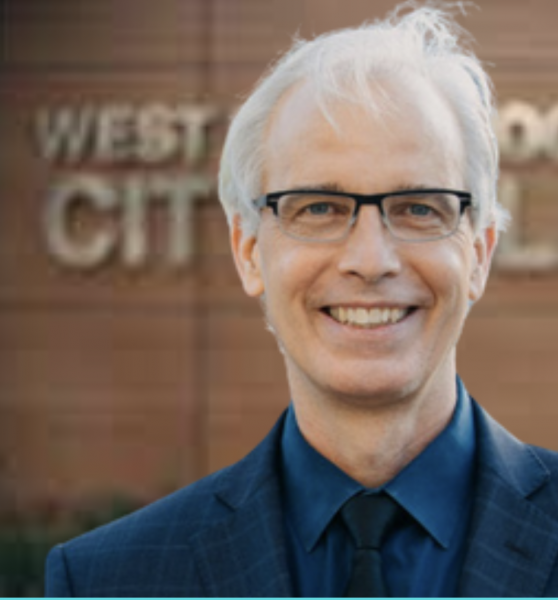
PUBLISHER’S NOTE: Things were happening fast – and a problem relayed to the former owners of WEHOville turned into a conference call later in the day. It appeared a deal was possible. My head started to imagine the next steps. The idea of WEHOville as a community magazine began to come into focus. What would be that first special Sunday feature?
There was only one person and his story that made sense. John Heilman, the founding father of the City of West Hollywood. John served the city since inception in 1984 and was defeated in this past November election. Over 36 years, John’s steady leadership created the city we all love. A text turned into a weekend call and finally a yes. John Heilman’s blessing laid the groundwork for the final handshake that brings WEHOville home for all of us. Thank you for your service and thank you for your blessings.
—
People are always curious about my perspective about what has changed in West Hollywood since we became a city in 1984. I usually respond paradoxically with, “Everything and nothing.”
West Hollywood has changed, of course, in many ways. So too has the world around us. Some changes are specific to West Hollywood, but we’ve also been impacted by shifts at the state, national and global level. I want to highlight eight significant changes, even though I know West Hollywood’s evolution has been impacted by so many other factors.
Changes in the Built Environment
Changes in the built environment or physical changes in a city are the ones which usually come to people’s minds when they think about how a community has changed. A person who visited West Hollywood in 1984 and returned today, would not recognize portions of our city. The biggest change is probably our main street—Santa Monica Boulevard. When West Hollywood became a city, Santa Monica Boulevard was still a state highway controlled by CalTrans. The median was barren dirt with abandoned railroad ties interspersed in places. Our sidewalks were narrow and we had no outdoor dining along the boulevard. We didn’t have landscaped medians, most of the Santa Monica Boulevard had no trees, and we had large wooden poles with wires strung across that would buzz late at night when there was moisture in the air. The transformation of Santa Monica Boulevard is certainly a major change since we became a city.
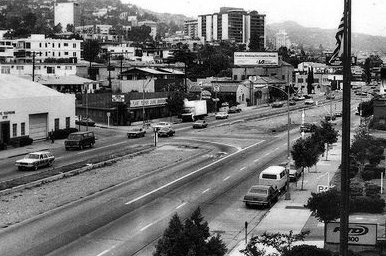
But we have also seen other public improvements. Trees were planted on all residential streets. A comprehensive services/senior center was built at Plummer Park. We added a new fire station on San Vicente Boulevard. We took a former jeans store on Santa Monica and Sweetzer and converted it into City Hall. We built the library and parking structure at West Hollywood Park and will soon complete an expanded park and new recreation facility and pools.
In addition to these public buildings, the appearance of the eastside of West Hollywood has also changed significantly since 1984. We’ve witnessed a tremendous transformation of the intersection of La Brea at Santa Monica Boulevard with the Target/Best Buy development and the growth at the Lot, the home of the old Warner Studios. We’ve also seen the Avalon rise at the old Movie Town Plaza shopping center, bringing 77 units of permanently affordable senior housing, a whole host of market rate apartment units and a new Trader Joes grocery store.
Business Changes
West Hollywood’s business community has also changed significantly since 1984. One big change was simply an attitudinal change. When we first became a city, new businesses were wary about locating in a city known primarily for rent control, the prevalence of the gay community and for being the home of the Sunset Strip. But business attitudes about the city and the gay community have changed significantly since the early days of cityhood. Now businesses choose to locate in West Hollywood because of the city’s commitment to LGBTQI rights and our embrace of progressive policies.
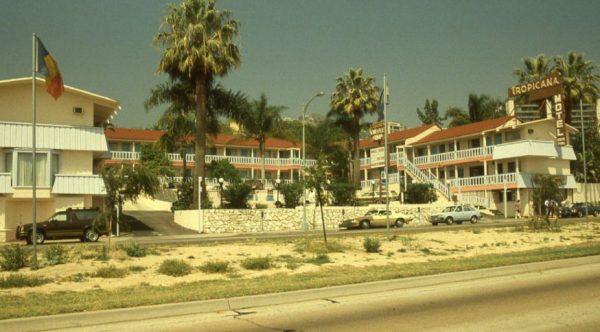
Of course, the attitudinal change was coupled with significant additions and changes in our business community. In 1984, the building where the Tower Hotel is now located was abandoned. BOA and Soho House didn’t exist. The Ramada on Santa Monica Boulevard was still the Tropicana Motel. The Abbey, Pump, Gracias Madre and so many of our iconic restaurants hadn’t been created yet. People still bought records and then CDs at Tower Records. We didn’t yet have YouTube. In fact, the internet didn’t exist. People didn’t send emails, they wrote letters. People didn’t have mobile phones. Even the places we shopped for groceries were different. Pavilions was Vons, Gelsons was Mayfair, the Ralph’s at La Brea and Fountain didn’t exist, and Whole Foods and Sprouts had no stores in West Hollywood. We also didn’t have a Starbucks at every major intersection because Starbucks hadn’t spread beyond its initial location in Seattle. Cannabis was not even permitted for medicinal purposes, let alone for adult recreational use.
While we probably all have a favorite business which is no longer operating in West Hollywood, the new businesses we’ve attracted have contributed to the vibrancy and diversity of our community, they’ve added significant new jobs and brought new sources of revenue to the city.
Political Changes
People who moved to Southern California recently have only experienced living in a Democratic-controlled state and a Democratic-controlled Los Angeles County. But that wasn’t the case back in 1984. In fact, for most of West Hollywood’s formative years, we faced state and federal administrations which were hostile to the progressive policies associated with our community. When we became a city, George Deukmejian had just been elected governor and the State of California was beginning a period of 16 years under the control of a Republican governor. Today, of course, most people can’t remember the last Republican to win statewide office in California, but that wasn’t always the case and it certainly wasn’t the situation in 1984.
At the federal level, West Hollywood became a city at the same time that Ronald Reagan was overwhelmingly elected to a second term as president. During most of West Hollywood’s existence, we have had a Republican president in the White House.
At the county level in 1984, the Board of Supervisors was controlled by a conservative Republican majority which was committed to phasing out rent control in unincorporated parts of the county. Today, of course, four members of the Board are Democrats and the only Republican member would likely be labeled a “Republican in Name Only” by activists from the Republican party.
As a community, West Hollywood no longer has to deal with a state or county administration which is openly hostile to the values espoused by the city. And for the next four years we will have a friend in the White House.
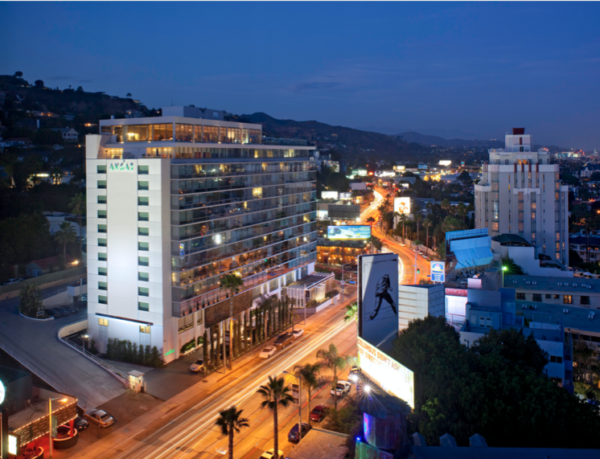
Fiscal Changes
When we incorporated in 1984, people wondered whether the city would be financially viable. In fact, during the effort to incorporate West Hollywood, one of the most worrisome topics for the incorporation committee was the ability to convince the Local Agency Formation Commission that West Hollywood would be fiscally viable. LAFCO estimated that West Hollywood would generate approximately $15 million in revenue. This exceeded our estimated expenses by enough that LAFCO was comfortable with permitting the incorporation question to be put on the ballot.
Since 1984, West Hollywood has consistently exceeded the estimated $15 million in revenue every year, even in our early years. Throughout our history as a city, our revenue has grown steadily. West Hollywood’s annual revenues now exceed $100 million. Of course, our expenses have grown too, but West Hollywood’s fiscal success is a significant change from the early days when there was concern about the ability of the city to succeed financially. And our fiscal success has enabled us to make significant investments in infrastructure and social services and to weather the current pandemic.
LGBTQI Rights
In 1984, West Hollywood was considered a big deal because we were the first city with an openly gay and lesbian majority on the City Council. It was such a big deal at the time that international media attended our first City Council meeting. It didn’t matter to those outside the city that the gay and lesbian members of the Council didn’t always agree with one another. What the outside world saw and highlighted was a City Council where three of the five members were gay or lesbian. By the way, in 1984, we usually spoke of gay or lesbian people, we didn’t begin to include the transgender community until later. “Queer” was still considered a pejorative term, not a term that people from our community would embrace.
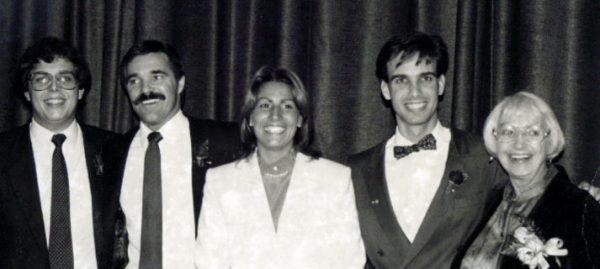
When we became a city, we quickly passed a nondiscrimination ordinance, negotiated with the sheriff to include nondiscrimination language in all its contracts and passed a domestic partnership registration program. While those changes were monumental at the time, in retrospect, they were merely small incremental changes as part of a nationwide and global movement toward LGBTQI equality. Now, marriage equality is the law of the land. And we have openly LGBTQI people in the United States Senate, in the House of Representatives, and in state and local elected offices throughout the country. That’s a dramatic change from 1984 when there were only a handful of open LGBTQI elected officials, and three of them were from West Hollywood.
HIV/AIDS
West Hollywood started in 1984, almost at the same time as the beginning of the AIDS epidemic. As the heart of the gay community, West Hollywood was hit especially hard. In the early days of cityhood, there was a palpable sense of fear and loss as we lost friends, lovers, employees and neighbors. The incredible strides which have been made with prevention and treatment have dramatically changed the landscape. Instead of counting t-cells, people are now focusing on their undetectable viral loads. While we can’t afford to be complacent and we still don’t have a cure, we have the tools to dramatically reduce the risk of transmission and the tools to make AIDS a manageable condition with a normal lifespan, rather than an automatic death sentence. This is certainly a significant change, at least for people in West Hollywood where there is greater access to treatment and healthcare. We still have a long way to go to ensure these improvements are experienced throughout the country and other parts of the globe, especially in hard-hit areas such as sub-Saharan Africa.
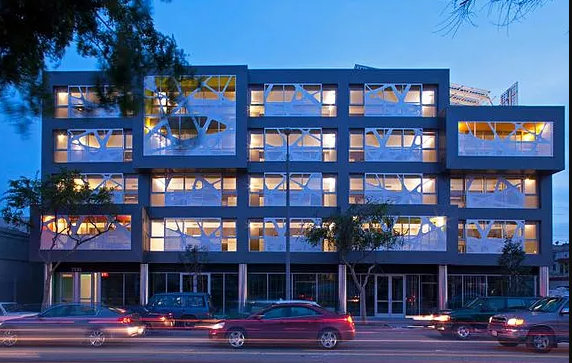
Affordable Housing
West Hollywood was born out of a struggle for rent control with a focus on affordable housing. Of course, we enacted a strong rent-control ordinance but quickly saw part of the strength of our ordinance stripped away by the state legislature with the Costa-Hawkins Act and the Ellis Act. But our rent-control law has now been in effect for almost as long as the city and it has provided protection for thousands of tenants who call West Hollywood home. Moreover, none of the predictions of the opponents of rent control have turned out to be true. The city hasn’t become a slum. Most property owners haven’t let their properties deteriorate; in fact, many have consistently maintained and even upgraded their buildings. Rent control also didn’t scare off people interested in building new housing. Builders are still interested in constructing new housing in West Hollywood.
In addition to our rent-control law, West Hollywood has also changed the landscape by creating new permanent affordable housing through our inclusionary housing ordinance. This requires developers to include low- and moderate-income units in newly development housing projects. Plus, the nonprofit organization, West Hollywood Community Housing Corporation has either renovated or built 14 buildings with approximately 400 permanently affordable units of housing.
Environment
The West Hollywood community has always been concerned about the environment, but locally and globally we’ve developed a much greater understanding about the way our actions are negatively impacting the environment and the steps we need to take to reverse course. While in our early days, we became the first city to implement recycling in multi-unit apartment buildings and condominiums. We implemented a 9/80 schedule for employees in an effort to reduce commuting and smog. But we’ve recognized that we to take more significant steps as we’ve collectively learned about a variety of threats to our health and threats to the environment including the impact of climate change.
We’ve implemented measures to reduce runoff and to limit pollutants entering the storm drain. We’ve developed programs to reduce greenhouse gas emission. We’ve established and expanded electronic waste programs and installed electric vehicle charging stations. We’ve developed programs to reduce the environmental impact of new buildings, forcing new buildings to “go green,” to use less water and to reduce energy consumption and their carbon footprint. While we’ve already seen significant change in our environmental focus and our environmental programs, our environmental policies will constantly change and evolve in response to new environmental knowledge and new insights and solutions to problems created by human activity.
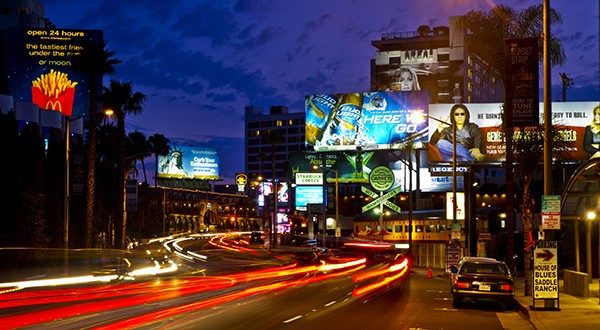
While West Hollywood has seen numerous significant changes since 1984, in many ways West Hollywood hasn’t changed at all. The type of person drawn to West Hollywood hasn’t changed. That’s why I sometimes say that nothing has changed since we became a city because the ethos or spirit of our city remains the same.
When I speak of the ethos or spirit of West Hollywood, I’m referring to the social consciousness of the community. West Hollywood has always had a spirit of freedom, a spirt of creativity, a spirit of compassion. The type of people drawn to live, work, celebrate or do business in West Hollywood hasn’t really changed. Very few residents of West Hollywood were actually born here. People live and work in West Hollywood because they choose to be here. So why have we all come to this place to call it our home? And why out of the 88 cities in Los Angeles County, have we, as residents or businesspeople, gravitated to West Hollywood? The answer to that question is the answer to why West Hollywood is such an amazing place.
West Hollywood has always attracted people trying to live freely. That’s why we have this spirit of freedom. Our community is filled with people trying to escape political persecution, repression or just the oppression of uniformity. You see it in the eyes of LGBTQI residents who escaped heteronormality from a small town in the Midwest. You hear it in the stories of our Russian-speaking immigrants who escaped religious and political oppression in a former Soviet country. You feel it in the passion of Iranian immigrants whose families escaped tyrannical violations of human rights and you know it from the struggle of some of our Latinx residents whose families have come to our country in search of a better way of life.
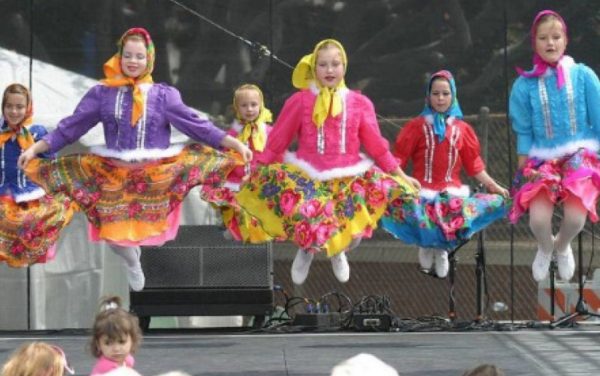
The spirit or ethos of West Hollywood embraces creativity. You see it in the exuberance of our Halloween festival. You hear it in the diverse sounds at our Russian Cultural Festival. You witness it with Drag Queen story hour at the library or Drag Queen bingo at Hamburger Mary’s. You know it from the numerous residents who come here to pursue a dream in fashion, art or design. Or the thousands who are in West Hollywood to pursue their dreams as actors, writers, singers and dancers.
West Hollywood’s spirit of compassion is demonstrated on a daily basis by the people who call West Hollywood home. People in West Hollywood are people who see an injustice or a need and they respond. You can tell from the way people in West Hollywood responded to the AIDS crisis. Our residents started organizations to help; they became activists to demand greater care and treatment options; they dedicated their professional careers to caring for others or researching treatments. Nothing has changed about this spirit of compassion. Our residents continue to respond whenever there is a need for service or an injustice which needs to be addressed. You probably witnessed it during the pandemic in the way our residents have looked out for one another. Residents have cooked for their neighbors, checked in on elderly neighbors, and picked up food and supplies for those who had risk factors. But it isn’t just neighbor-to-neighbor interactions: you can also see members of the West Hollywood community volunteer to feed homeless individuals, deliver meals to seniors, provide assistance to people living with AIDS and volunteer to help at-risk youth.
So yes, West Hollywood has changed. Change is inevitable in life and in any community. But the heart and soul of West Hollywood hasn’t changed. The people who continue to come to West Hollywood are the same people who have always sought out a place which is imbued with a sense of freedom, creativity and compassion, a place I’m proud to call home.
COMING SOON:
Next Sunday April 11th
Sneak Preview: The new WEHOville
Coming Sunday April 18th
Councilwoman Sepi Shyne reflects on six months of service on the City Council after her historic victory in November.
